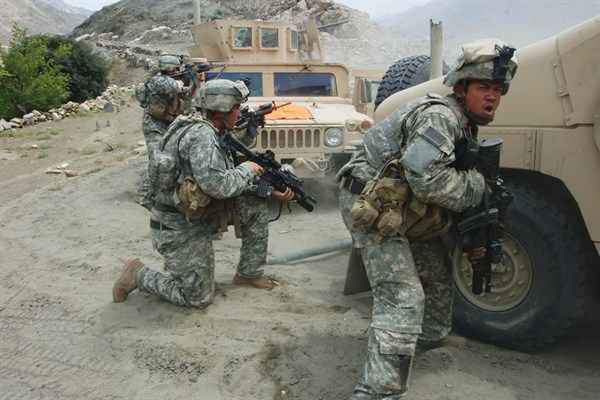In the traumatic months after the Sept. 11 attacks, American policymakers decided that the conflict with transnational extremism demanded an aggressive response. This made perfect sense: To go on the offensive as soon as possible is the American way. In the new conflict with al-Qaida and other extremists, the United Stated intended to fight them over there to avoid having to fight them here, as then-President George W. Bush put it.
However appealing this might have been to the angry American public, there were challenges putting it into practice. To undertake a global offensive against extremists, the United States needed to engage a shadowy, irregular enemy using a military built for quick, high-tech operations against conventional armed forces. But the military operation in Afghanistan that overthrew al-Qaida’s Taliban supporters seemed to offer a way to do it. In what become known as the “Afghan model” of military intervention, U.S. airpower and Special Operations Forces bolstered local allies who bore the brunt of the direct fighting with the extremists. Eventually, the thinking went, the militias that the United States backed would be transformed into a conventional military. With continued American support, this force would eradicate extremism and secure its country.
Thus the strategic paradigm for the conflict with extremism was a global offensive that relied on local militaries and governments to permanently secure the places where extremism grows.

